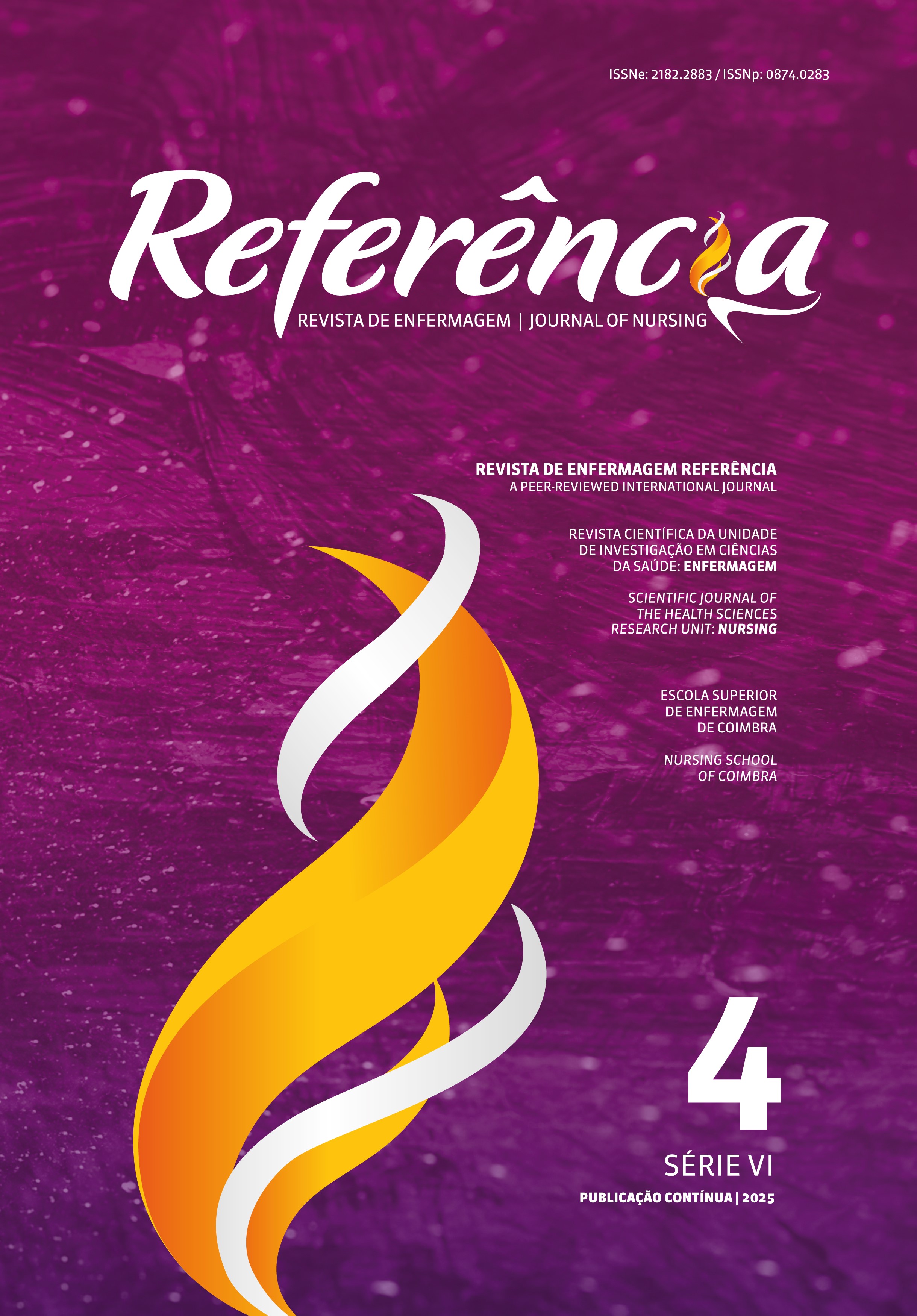Women’s perceptions of the care received during water birth
DOI:
https://doi.org/10.12707/RV21099Keywords:
natural childbirth, humanizing delivery, nurse midwives, nursing theory, nursing care, comprehensive health careAbstract
Background: The model for care provided during water birth is interpersonal, comprehensive, and respected.
Objective: To identify women’s perceptions of the care provided by nurses specialized in maternal and obstetric health nursing nurses specialized in maternal and obstetric health nursing during water birth from the perspective of Jean Watson’s nursing theory.
Methodology: Empirical, qualitative, and interpretative research with 24 Portuguese women who had a water birth in hospitals or at home. Data were analyzed using Bardin’s content analysis method.
Results: Five categories emerged from the narratives: welcoming environment; women in control during labor; trusting relationship; expectations fulfilled; and the partner as part of the process.
Conclusion: The Clinical Caritas Process was perceived in the narratives through respect and affection during care delivery to develop a relationship and promote cooperation, leading to inner healing through this care process. Participants’ perceptions of the care received during their water birth revealed a safe, intimate, respectful, welcoming, and favorable environment, without unnecessary interventions and supported by the partner.
Downloads
References
Almeida, A. I., & Araújo, C. L. (2020). Parir e nascer em casa: Vivências de enfermeiras obstétricas na assistência ao parto domiciliar planejado. Enfermagem em Foco, 11(6).
Bardin, L. (2016). Análise de conteúdo. Edições 70.
Bohren, M. A., Berger, B. O., Munthe‐Kaas, H., & Tunçalp, Ö. (2019). Perceptions and experiences of labour companionship: A qualitative evidence synthesis. Cochrane Database of Systematic Reviews, 3. https://doi.org/10.1002/14651858.CD012449.pub2
Bourguignon, A. M., & Grisotti, M. (2020). A humanização do parto e nascimento no Brasil nas trajetórias de suas pesquisadoras. História, Ciências, Saúde-Manguinhos, 27(2), 485-502. https://doi.org/10.1590/S0104-59702020000200010
Çalik, K. Y., Karabulutlu, Ö., & Yavuz, C. (2018). First do no harm-interventions during labor and maternal satisfaction: A descriptive cross-sectional study. BMC Pregnancy and Childbirth, 18(1), 1-10. https://doi.org/10.1186/s12884-018-2054-0
Camargo, J. D. (2019). O parto na água no contexto hospitalar em Portugal: Vivências de mães e profissionais [Tese de doutoramento, Instituto de Ciências Biomédicas Abel Salazar da Universidade do Porto]. Repositório Institucional do Instituto de Ciências Biomédicas Abel Salazar da Universidade do Porto. https://repositorio-aberto.up.pt/bitstream/10216/121145/2/329872.pdf
Carpenter, J., Burns, E., & Smith, L. (2022). Factors associated with normal physiologic birth for women who labor in water: A secondary analysis of a prospective observational study. Journal of Midwifery & Women’s Health, 67(1), 13-20. https://doi.org/10.1111/jmwh.13315
Davis, D., Ferguson, S., Nissen, J., Fowler, C., & Mosslar, S. (2019). A salutary childbirth education program: Health promoting by design: A discussion paper. Sexual & Reproductive Healthcare, 22, 100456. https://doi.org/10.1016/j.srhc.2019.100456
Evangelista, C. B., Lopes, M. E., Nóbrega, M. M., Vasconcelos, M. F., & Viana, A. C. (2020). Análise da teoria de Jean Watson de acordo com o modelo de Chinn e Kramer. Revista de Enfermagem Referência, 5(4), e20045. https://doi.org/10.12707/RV20045
International Confederation of Midwives. (2021). ICM global standards for midwifery education. https://internationalmidwives.org/assets/files/general-files/2021/09/global-standards-for-midwifery-education_2021_en.pdf
Madula, P., Kalembo, F. W., Yu, H., & Kaminga, A. C. (2018). Healthcare provider-patient communication: A qualitative study of women’s perceptions during childbirth. Reproductive Health, 15(1), 135. https://doi.org/10.1186/s12978-018-0580-x
Maimburg, R. D., Væth, M., & Dahlen, H. (2016). Women’s experience of childbirth: A five year follow-up of the randomised controlled trial: “Ready for child trial”. Women and Birth, 29(5), 450-454. https://doi.org/10.1016/j.wombi.2016.02.003
Pereira, C. S., Mercês, C. A., Lopes, R. O., Souza, J. F., Souto, J. D., & Brandão, M. A. (2020). Análise do conceito de conforto: Contribuições para o diagnóstico de disposição para conforto melhorado. Escola Anna Nery, 24(2), e20190215. https://doi.org/10.1590/2177-9465-EAN-2019-0205
Shorey, S., Chee, C., Ng, E. D., Chan, Y. H., Tam, W., & Chong, Y. S. (2018). Prevalence and incidence of postpartum depression among healthy mothers: A systematic review and meta-analysis. Journal of Psychiatric Research, 104, 235–248. https://doi.org/10.1016/j.jpsychires.2018.08.001
Shorey, S., Chee, C., Ng, E. D., Chan, Y. H., Tam, W., & Chong, Y. S. (2018). Prevalence and incidence of postpartum depression among healthy mothers: A systematic review and meta-analysis. Journal of psychiatric research, 104, 235–248.
Sigurdardottir, V. L., Gamble, J., Gudmundsdottir, B., Kristjansdottir, H., Sveinsdottir, H., & Gottfredsdottir, H. (2017). The predictive role of support in the birth experience: A longitudinal cohort study. Women and Birth, 30(6), 450-459. https://doi.org/10.1016/j.wombi.2017.04.003
Souto, S., Albuquerque, R. S., Silva, R., Guerra, M. J., & Prata, A. P. (2020). Midwifery interventions to reduce fear of childbirth in pregnant women: A scoping review protocol. JBI Evidence Synthesis, 18(9), 2045–2057. https://doi.org/10.11124/JBISRIR-D-19-00198
The Royal Australian and New Zealand College of Obstetricians and Gynaecologists. (2021). Water immersion during labour and birth. https://ranzcog.edu.au/RANZCOG_SITE/media/RANZCOG-MEDIA/Women%27s%20Health/Statement%20and%20guidelines/Clinical-Obstetrics/Water-immersion-during-labourand-birth-(C-Obs-24)_March-2021.pdf?ext=.pdf
Vanderlaan, J., Hall, P. J., & Lewitt, M. (2018). Neonatal outcomes with water birth: A systematic review and meta-analysis. Midwifery, 59, 27–38. https://doi.org/10.1016/j.midw.2017.12.023
Watson, J. (2007). Watson´s theory of human caring and subjective living experiences: Carative factors/caritas processes as a disciplinary guide to the professional nursing practice. Texto & Contexto-Enfermagem, 16(1), 129-135. https://doi.org/10.1590/S0104-07072007000100016
WHO recommendations: intrapartum care for a positive childbirth experience. Geneva: World Health Organization; 2018. Licence: CC BY-NC-SA 3.0 IGO https://apps.who.int/iris/bitstream/handle/10665/260178/9789241550215-eng.pdf
World Health Organization [WHO recommendations]. (2018). World Health Organization. Intrapartum care for a positive childbirth experience. In L. C. B.-N.-S. IGO. (Ed.). World Health Organization. https://apps.who.int/iris/bitstream/handle/10665/260178/9789241550215-eng.pdf






















